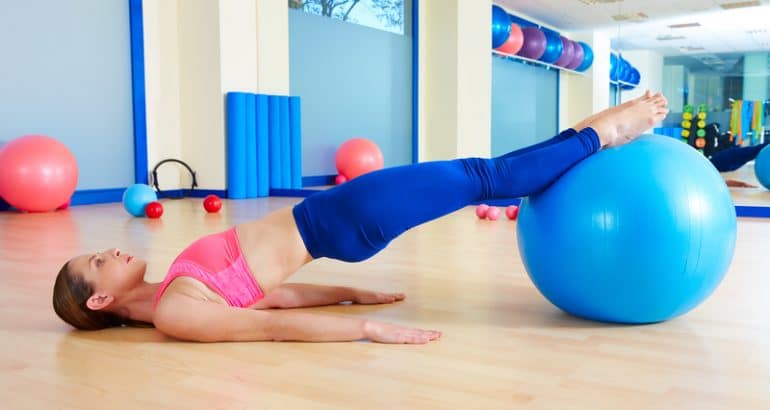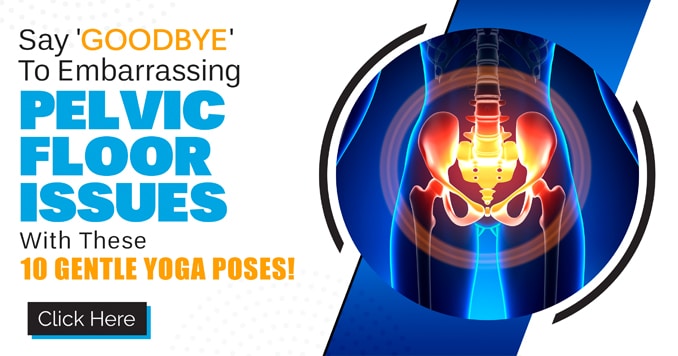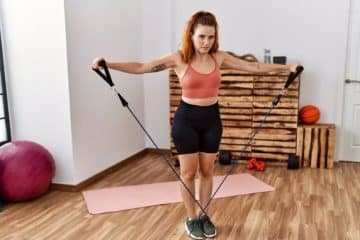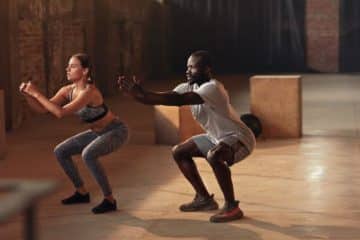Having a strong and healthy pelvic floor is incredibly important. We have detailed several of these reasons below, and have included different exercises designed to help you strengthen your pelvic floor.
- Continence
If you have experienced bladder leakage when you laugh, sneeze or cough, that may indicate that your pelvic floor is weak. The pelvic floor has many important functions, one of which is to control the flow of your urine.
The pelvic floor is like a hammock that goes from the front of your pubic bone, all the way back to the anus. It helps to control not only the flow of all of your bodily functions in that area but also helps to hold your organs.
It plays a big role in pelvic stability. It’s really important for bladder and bowel control in both men and women.
Men who have prostate problems, like prostate cancer post-treatment, sometimes need to retrain the pelvic floor for bladder continence. Women who have given birth or have had hysterectomies or any gynecological surgeries also need to retrain their pelvic floor.
- Reducing the risk of prolapse
If you have trouble with constipation, you may be at risk of your pelvic floor pushing down, and other vital organs moving or applying too much pressure.
You want your pelvic floor to contract when it needs to contract and relax when it doesn’t need to contract.
- Sexual health
When we have a strong, resilient pelvic floor, sexual health improves. The ability to have orgasms and the ability to enjoy sexual intercourse is way higher when your pelvic floor is resilient and able to contract and relax.
Contracting and relaxing happen during sexual intercourse, so it is really important for pelvic floor health.
- Confidence and quality of life
Frequently worrying about bladder accidents can greatly impact your quality of life. A healthy pelvic floor helps you improve your confidence, allowing you to go out and enjoy life more fully.
5 Exercises For a Healthy Pelvic Floor
1. Thigh Ball Squeeze
Squeezing something between your knees actually activates your groin and automatically increases activity in the anterior part of your pelvic floor.
Squeeze a ball and then gently tighten the muscles that are responsible for stopping urinating. This is a great way to start training your pelvic floor. This can be done when sitting or lying down.
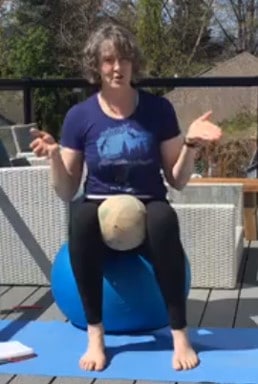
Thigh Ball Squeeze
Alternative Exercise:
Lie on your back with your knees bent and then your feet flat on the floor. Place the ball between your knees. Engage your core and then lift your head.
Squeeze the ball with your knees, feeling a gentle tightening in your lower abdominal muscles and a gentle pulling up in your pelvic floor.
Hold this position for 5 breaths. Repeat this exercise a few times a day.
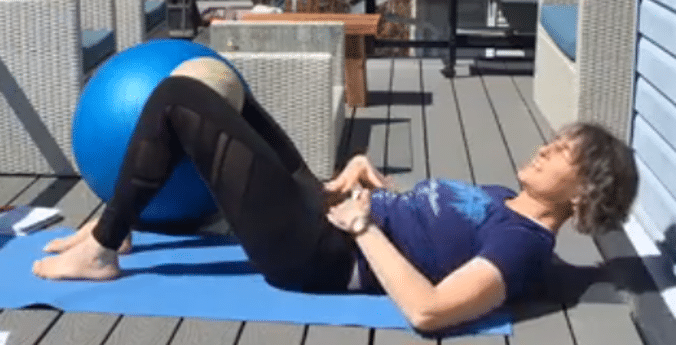
Alternative Exercise
2. Single Knee to Chest
Lie on your back on the floor with your knees bent and your feet flat on the floor. Straighten one leg. Engage your core, bend your knee and bring it towards your chest.
Lower your leg down to return to the starting position and then repeat the movement.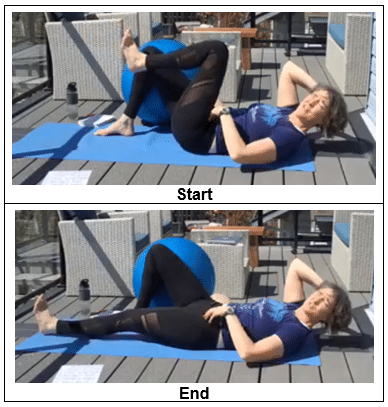
Single Knee to Chest
Alternative Exercise:
Basically, lie on your back on the floor with your knees bent and your feet flat on the floor. Hold a ball overhead with both hands and straighten one leg. Engage your core and lift your head slightly as you bend your knee and bring your knee up towards your chest.
Lower your leg down to return to the starting position and then repeat the movement.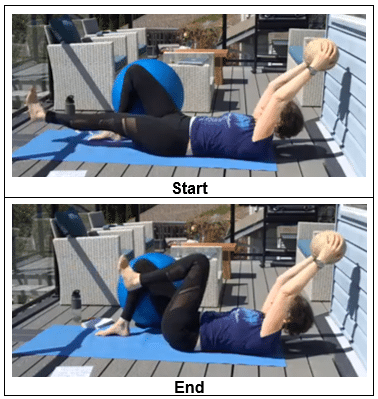
Alternative Exercise
3. Bridging with a Ball
Lie on your back on the floor with your knees bent and your feet flat on the floor, relaxing your upper body. Place the ball between your knees. Push from your heels to lift your hips.
Moreover,hold this position for a few seconds, squeezing your glutes at the top position. After that, lower your hips down to return to the starting position and repeat the movement.
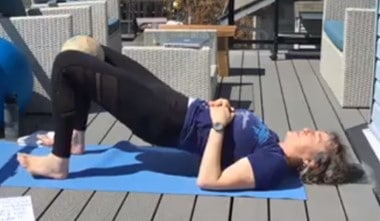
Bridging with a Ball
4. Hands and Knees
Begin in a 4-point position, with your hands beneath your shoulders and then your knees under your hips. Tighten your abdominal area.
Slowly round out your mid-back and drop your head downward. Then alternate by lifting your head up and arching your mid-back. Repeat the sequence of movements.
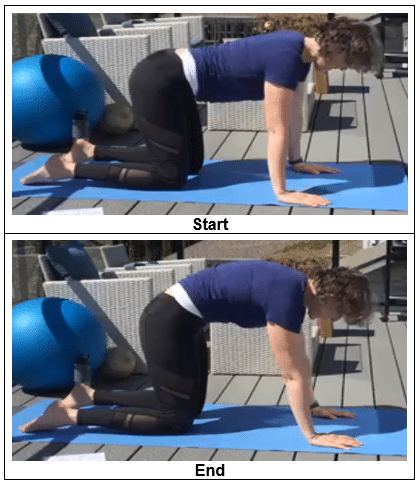
Hands and Knees
5. Relaxation
Begin in a 4-point position, with your hands beneath your shoulders and then your knees under your hips. Drape your upper body over the top of the stability ball.
Rest and relax your pelvic floor for at least 2-3 minutes.
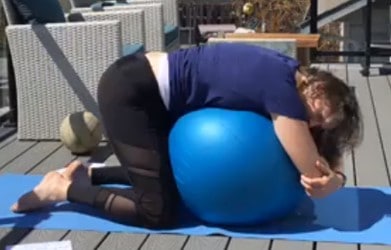 Relaxation
Relaxation

